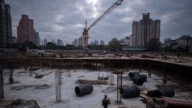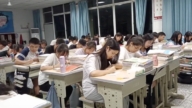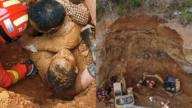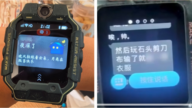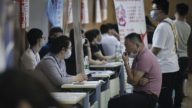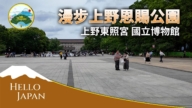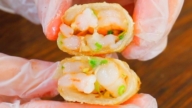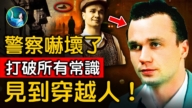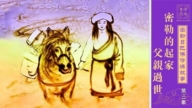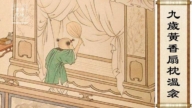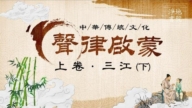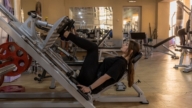【新唐人2011年10月10日讯】台湾台北投资新台币三百亿元扩建故宫博物馆,将展览面积增加五倍,并强调台湾要扮演中华文化领航者。网友声称:台湾这个“大故宫计划”让大陆故宫情何以堪。
10月7号,台湾正式宣布启动“大故宫计划”,将耗资台币三百亿元,费时至少十年扩建台北故宫博物馆。 “大故宫计划”使故宫展览面积增加五倍,原先正馆仅能同时展出三千件展品,扩建后,可以同时展出一万五千件展品。
中华民国总统马英九出席了“中华民国建国100年大故宫计划”宣布仪式,他强调,台湾要成为中华文化的领航者。
台湾的“大故宫计划”引起了大陆网友的关注,有留言表示“支持,同时希望北京故宫博物院把重要文物都交到台北去保存”。还有网友喟叹:“唉,台北大故宫计划叫‘大陆故宫’情何以堪啊!!!”。
就在台北故宫推出“大故宫计划”的当儿,北京故宫又引来非议。
上周,大陆媒体报导,故宫午门外共有十多个厕位收取游客1元的费用,游客诧异表示“北京的公厕不早就全都免费了吗?” 但东城区环卫局回应声称,上述公厕确实为私营性质,自负盈亏,收费不违规。
有网友质问:“谁给公厕做了‘变性’手术?”,也有网友发文:“如果故宫门口的厕所可以由私人投资修建,那么我也想在故宫门口建一个收费厕所,行吗?”
网友不禁又把台北故宫和北京故宫拿来对比。有网友说:“我想去台湾看看故宫,台湾故宫的厕所收费吗????请台湾同胞隔海喊一声。”
北京故宫从今年传出许多丑闻,包括文物轻易被盗、锦旗写白字、建福宫变成私人会所、私下拍卖故宫文物、宋代哥窑瓷器被毁、清代屏风浸水、“文革”期间3000套清代御林军铠甲减价被卖、内部人员私分门票票款等,现在又闹出“厕所门”。
对比台北和北京两个故宫的作为,难怪网友要说:“幸亏中正先生49年带了一批宝物过去,不然文哥(文革)10年都砸了”。
台湾从上个世纪40年代把故宫64万件文物转移带台北故宫博物院到今天,所有文物保留完整,相对于大陆文革对中华文化、文物的破坏,功过不可同日而语。
《汉书•艺文志》记载孔子的话:“礼失而求诸野”,意思是有些礼的内容丧失,可以在中原以外的地方探求到。经历文化大革命之后,有些民间的传统艺术在中国大陆已经消失或式微。如,《新纪元》周刊文章《剪黏艺师叶进禄父子的百年传承》报导,深具历史价值的寺庙装饰艺术——剪黏,在中国已经消失,却在台南百年相传。
此外,台湾坚持使用正体字,相对于大陆使用简体字,也更完整的继承了五千年的中华文化。
看来马英九借“大故宫计划”,强调要台湾成为中华文化领航者,而台湾保留了丰厚的中华文化遗产,的确有一定的优势。
新唐人记者吴惟、葛雷综合报导。
Taiwan’s Leading Role in Culture Preservation Embarrasses Beijing
Taipei has announced it will invest one trillion US dollars
to expand the National Palace Museum.
This plan will increase the exhibition area by five times.
Taiwan stresses its determination
to play a leadership role in Chinese culture.
People commented on-line: “Taiwan’s Grand Museum Project
is unbearable to the Palace Museum in Beijing.”
October 7, Taiwan officially announced the launch of the “Grand National Palace Museum Project.” This 10-year project has a projected cost of 30 trillion New Taiwan Dollars. The Grand project will increase the exhibition area by 5 times. The expansion will allow display of more than 15,000 articles, instead of 3,000 at the present time.
President Ma Ying-Jeou attended the launch ceremony to announce “the 100th year National Birthday of Republic of China Grand National Palace Museum Project.” He emphasized that Taiwan will be the leader of Chinese Culture.
Taiwan’s Grand Museum Project draws mainlanders’ attention. Someone commented on the website by stating, “Support it and also hope Beijing Palace Museum will hand over valuable articles to Taipei for protection.” Another one commented, “Sigh, how unbearable is Taipei’s Grand Museum Project to Beijing’s Museum!!!”
While Taipei launches the Grand National Palace Museum Project, Beijing Palace Museum is facing criticism.
Last week, the mainland media reported that toilet seats outside the Meridian Gate of the Palace Museum charged a service fee of one yuan. Tourists were surprised and questioned, “Aren’t Beijing’s public toilets already free of charge?” The Sanitation and Management Bureau of Dongcheng District responded that the Meridian Gate toilets were indeed privately owned and the charge is not illegal.
Someone questioned on-line, “Who did the ‘transgender’ surgery to these public toilets?” Another post stated, “If toilets by the Palace Museum gate can be built by private investment, can I also build a fee-based toilet by the Museum?”
People could not help but compare Taipei’s National Palace Museum to Beijing’s Palace Museum. Someone commented, “I want to visit the National Palace Museum in Taiwan. Do they charge the toilet usage fee? Please, compatriots across the Taiwan Strait, tell me.”
There have been a number of scandals coming from the Beijing Palace Museum this year, including easily stolen artifacts, wrongly used characters in display banners, the turning of Jianfu Palace into a private club, private auction of Museum collections, a destroyed china piece from the Song Dynasty, a soaked screen from the Qing Dynasty, 3,000 armors from the Qing Dynasty royal guards were sold at a reduced price by the Museum during the Cultural Revolution, staff embezzlement, and now the toilet issue.
Comparing the two Palace Museums between Taipei and Beijing, no wonder people claimed, “Luckily, Mr. Chiang Kai-Shek brought those treasures to Taiwan during 1949. Otherwise, they would have been smashed in the 10 years of Cultural Revolution.”
Taiwan has preserved 640,000 artifacts in Taipei National Palace Museum since the 1940’s. All of them are still in tact, as opposed to the damage the Cultural Revolution has brought to the Chinese culture and artifacts; there’s no comparison between Taiwan and China.
“Han Yi Wen Zhi" records the words of Confucius: “Seek and restore the lost manners from the folks.” It means when the ritual is lost, it can be found in places outside of the Central Plains. After the Cultural Revolution, many traditional arts have disappeared or declined in China. However, as reported by the New Epoch Weekly, “Hundred years of heritage of Jiannian sculpture transcended by craftsman Ye Jin-Lu and his son,” the historical art form, Jiannian, to decorate temples, has disappeared in China and yet has been inherited in Tainan (a city in Taiwan) for over a century.
In addition, Taiwan insists upon the traditional Chinese characters as the official written form, as opposed to the simplified characters used by the mainland Chinese. The five thousand years of Chinese culture has been more completely inherited by the use of traditional Chinese characters.
President Ma Ying-Jeou seems to emphasize Taiwan’s claiming of the leadership role in Chinese culture by taking on the Grand National Palace Museum Project. The fact is that Taiwan has retained rich Chinese culture and Taiwan indeed has certain advantages.
NTD reporters Wu Wei and Ge Lei


